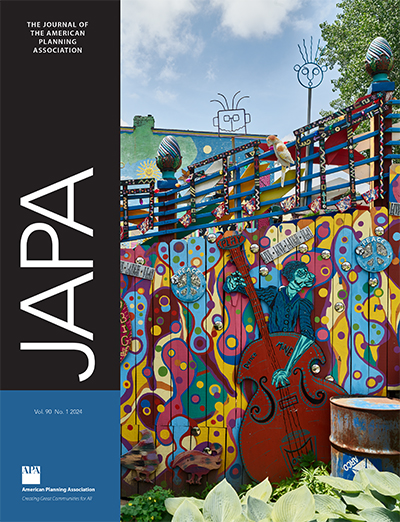Who Is Planning the Smart City?
IF 3.4
2区 经济学
Q1 REGIONAL & URBAN PLANNING
Journal of the American Planning Association
Pub Date : 2023-08-10
DOI:10.1080/01944363.2023.2235997
引用次数: 0
Abstract
C ities are sites of innovation. Smart city technology is one form of innovation that planners are increasingly encountering. But how and when does this innovation improve the quality of life in cities? Who decides how and when innovation gets deployed? Urban planners have always played a central role in generating policy, design, and public engagement processes while mediating competing interests in the city. What is the role of the planner in the smart city? Are we, as planning researchers, educators, and professionals, up to the task? The three books that comprise this review speak to the opportunities and challenges planners and our residents face. Interestingly, two of the three books reviewed here, by John Lorinc and Josh O’Kane, come not from planning researchers or educators but from Canadian journalists. The third book, edited by Susan Flynn, gathers 22 scholars of geography, architecture, digital culture, design, equity studies, sociology, digital learning, science and technology studies, theater, urban planning, engineering, creative industries, urban development, and communication. Collectively, these three books offer important critical insights on how efforts to bring new technologies to cities create tensions between innovation, privatesector interests, the role of governments in procuring and implementing innovative urban development projects, and resident engagement in planning and design processes. Though the intended audiences are broader than planning researchers, educators, students, and practitioners, individually and collectively these books are a cautionary tale for our profession and its role in the city-building process as we confront the uses and implications of digital technologies.谁在规划智慧城市?
城市是创新之地。智慧城市技术是规划者越来越多地遇到的一种创新形式。但这种创新是如何以及何时提高城市生活质量的呢?谁来决定如何以及何时部署创新?城市规划者一直在制定政策、设计和公众参与过程中发挥核心作用,同时调解城市中相互竞争的利益。在智慧城市中,规划师的角色是什么?作为规划研究人员、教育工作者和专业人士,我们能胜任这项任务吗?这三本书包含了这篇综述,讲述了规划师和我们的居民面临的机遇和挑战。有趣的是,在本文所介绍的三本书中,约翰·洛林克(John Lorinc)和乔希·奥凯恩(Josh O’kane)所著的两本书并非来自规划研究人员或教育家,而是来自加拿大记者。第三本书由苏珊·弗林编辑,汇集了22位来自地理、建筑、数字文化、设计、公平研究、社会学、数字学习、科学和技术研究、戏剧、城市规划、工程、创意产业、城市发展和通信领域的学者。总的来说,这三本书提供了重要的批判性见解,探讨了将新技术引入城市的努力如何在创新、私营部门利益、政府在采购和实施创新城市发展项目中的作用以及居民参与规划和设计过程之间造成紧张关系。虽然目标读者比规划研究人员、教育工作者、学生和实践者更广泛,但当我们面对数字技术的使用和影响时,这些书对我们的职业及其在城市建设过程中的作用都是一个警示。
本文章由计算机程序翻译,如有差异,请以英文原文为准。
求助全文
约1分钟内获得全文
求助全文
来源期刊
CiteScore
11.00
自引率
10.70%
发文量
80
期刊介绍:
For more than 70 years, the quarterly Journal of the American Planning Association (JAPA) has published research, commentaries, and book reviews useful to practicing planners, policymakers, scholars, students, and citizens of urban, suburban, and rural areas. JAPA publishes only peer-reviewed, original research and analysis. It aspires to bring insight to planning the future, to air a variety of perspectives, to publish the highest quality work, and to engage readers.

 求助内容:
求助内容: 应助结果提醒方式:
应助结果提醒方式:


